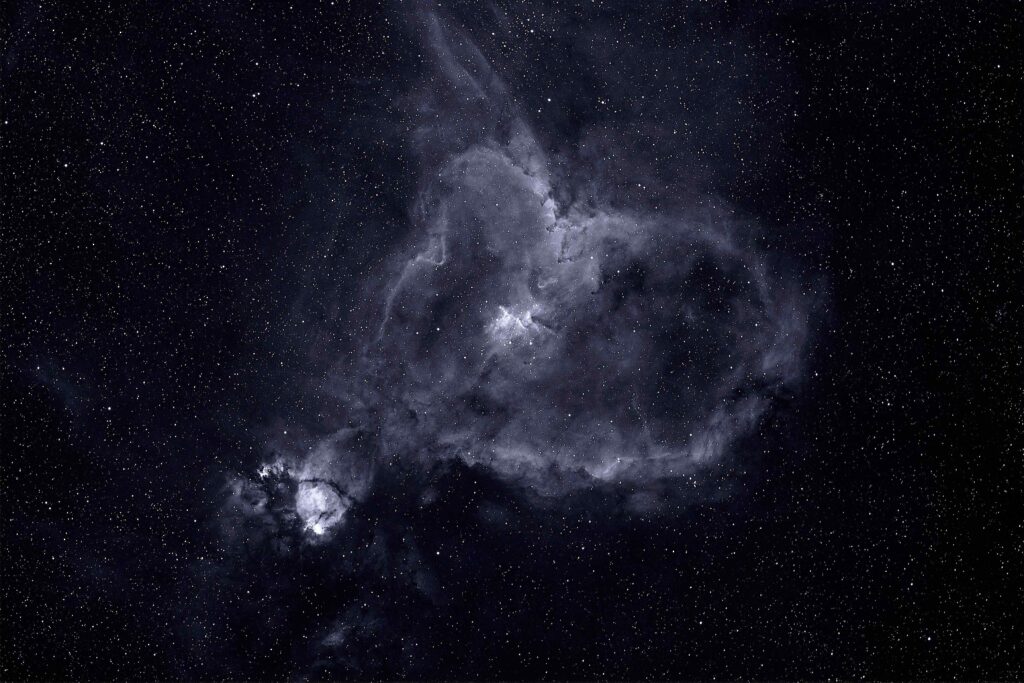A large cloud of hydrogen gas 7,500 light years away in the constellation Cassiopeia that is being illuminated by the numerous hot, young stars in the interior. At a computed width of 200 light years (1.2 quadrillion or 1,200,000,000,000,000 miles), it represents the largest "heart" shape in the known universe, albeit a little wobbly. Three prominent features are the distinctive heart shape, the small cluster of stars in the center (Melotte 15), and the bright knot to the lower left in this image (NGC 896).
The Heart Nebula
Date Taken:October 21, 2011
Location Taken: Conditions of Location:FWHM 2.08
Equipment Used:Takahashi FSQ-106 (4") apochromatic refractor telescope, Paramount ME mount, SBIG STL11000 CCD camera with remote guide head connected to Takahashi Sky90 for autoguiding, Astrodon hydrogen-alpha filter, T-Point used for polar alignment (required for each imaging session due to my portable setup).
Processing Used:15 x 15 minutes using a hydrogen-alpha filter, guided exposure (total exposure time of 3 hours, 45 minutes), 1x1 binning, processed in Maxim DL and Photoshop.
Distance from Location:7,500 light years
Constellation:Cassiopeia (mythological wife of Cepheus)
Other Link:
